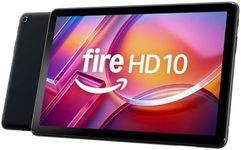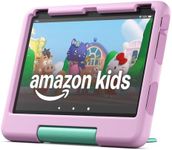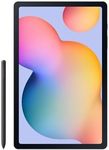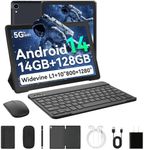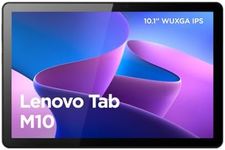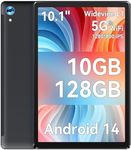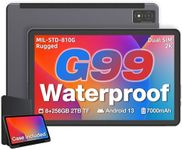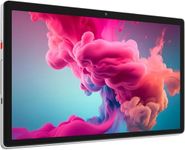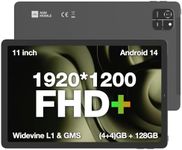Buying Guide for the Best 10 Inch Tablets
When choosing a 10-inch tablet, it's important to consider how you plan to use it. Whether it's for entertainment, productivity, or a mix of both, understanding the key specifications will help you find a tablet that meets your needs. A 10-inch tablet offers a balance between portability and screen size, making it ideal for watching videos, reading, and light work tasks. Consider what features are most important to you, such as performance, display quality, battery life, and connectivity options, to ensure you select a tablet that fits your lifestyle.Display ResolutionDisplay resolution refers to the number of pixels on the screen, which affects the clarity and detail of the images. A higher resolution means a sharper and more detailed display. For a 10-inch tablet, common resolutions include 1280x800, 1920x1200, and 2560x1600. If you plan to use your tablet for watching high-definition videos or reading, a higher resolution like 1920x1200 or above will provide a better experience. However, if your usage is more casual, a lower resolution may suffice and can help conserve battery life.
ProcessorThe processor is the brain of the tablet, determining how fast and efficiently it can run applications and perform tasks. Processors in tablets range from basic dual-core to more advanced octa-core options. If you intend to use your tablet for gaming, multitasking, or running demanding applications, a more powerful processor with at least a quad-core setup is recommended. For basic tasks like browsing and streaming, a dual-core or lower-end quad-core processor should be adequate.
RAMRAM (Random Access Memory) is crucial for multitasking and running applications smoothly. It allows the tablet to handle multiple tasks at once without slowing down. Tablets typically come with RAM ranging from 2GB to 8GB or more. If you plan to use your tablet for heavy multitasking or running memory-intensive applications, aim for at least 4GB of RAM. For lighter use, such as browsing and media consumption, 2GB to 3GB should be sufficient.
Storage CapacityStorage capacity determines how much data, such as apps, photos, and videos, you can store on your tablet. Tablets usually offer storage options ranging from 16GB to 256GB or more. If you plan to store a lot of media files or large applications, consider a tablet with at least 64GB of storage. Some tablets also offer expandable storage via microSD cards, which can be a cost-effective way to increase storage capacity if needed.
Battery LifeBattery life indicates how long the tablet can operate on a single charge. It's an important factor if you plan to use your tablet on the go. Battery life can vary significantly, with some tablets offering as little as 5 hours and others up to 15 hours or more. Consider how you will use your tablet; for frequent travel or long usage sessions, look for a tablet with at least 8-10 hours of battery life to ensure it lasts throughout the day.
Operating SystemThe operating system (OS) is the software platform that runs the tablet and determines the user interface and available apps. Common tablet operating systems include Android, iOS, and Windows. Each has its own ecosystem and app availability. If you are already invested in a particular ecosystem (e.g., you own other Apple devices), it might make sense to choose a tablet with the same OS for seamless integration. Consider what apps and features are most important to you when selecting an OS.
Connectivity OptionsConnectivity options refer to how the tablet can connect to the internet and other devices. Most tablets offer Wi-Fi connectivity, but some also include cellular options for mobile data access. If you need internet access on the go, consider a tablet with cellular connectivity. Additionally, check for Bluetooth and USB ports if you plan to connect peripherals like keyboards or headphones. Consider your connectivity needs based on how and where you plan to use your tablet.


